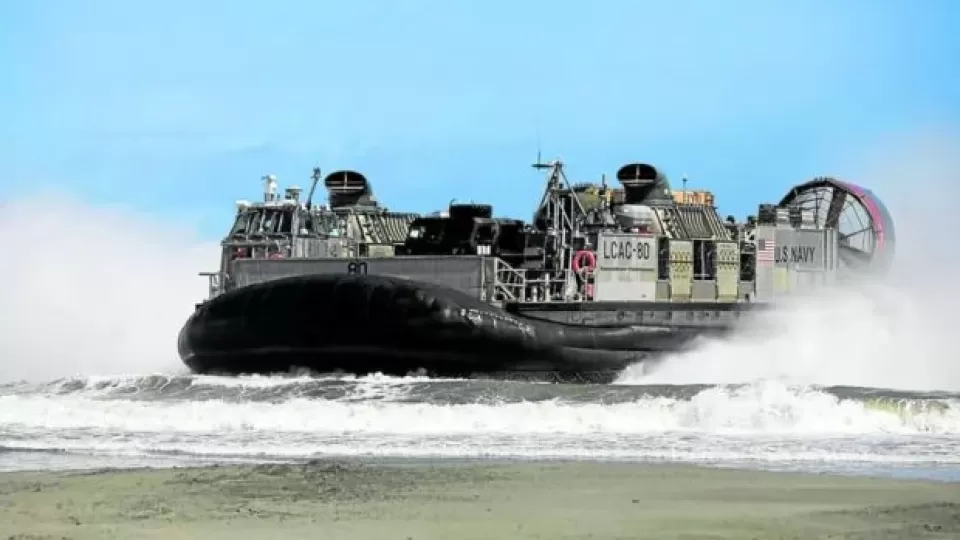April 4, 2022
MANILA — The United States has deployed its state-of-the-art air and missile defense system to the Philippines for the first time as part of an annual joint war games and a major display of American force.
The US Army in the Pacific carried out the first amphibious insertion of a Patriot missile system — the first time that the United States deployed the system overseas by land and sea — in Aparri in the province of Cagayan, located in the northern Philippines facing south of Taiwan. The deployment was apparently meant to showcase the United States’ capabilities to move around the Indo-Pacific region when needed.
“Air defenders from Bravo Battery, 1st Battalion, 1st Air Defense Artillery Regiment based out of Okinawa, Japan, made history this week as they conducted the first-ever amphibious insert of Patriot Minimum Engagement Package in Aparri, Philippines, as part of #Balikatan22,” the US Army Pacific said on Twitter on March 31.
For maritime security expert Collin Koh from the S. Rajaratnam School of International Studies in Singapore, the Americans appeared to be testing out new concepts for future Pacific theater operations, and this fits into the patterns of their recent exercises around the region.
“The Patriot deployment would specifically imply the Americans’ concerns about augmenting defenses for its forces in the theater against US adversaries’ growing missile threat,” he told the Inquirer.
Taiwan situation
The joint drills also take place as China continues to step up its military activities near Taiwan, which it believes to be part of its territory. Beijing has been regularly flying its military aircraft into Taiwan’s air defense identification zone, and conducting naval and air drills near the Taiwan Strait, located north of the Philippines.
But Koh believes the exercises in Cagayan were not aimed specifically at a Taiwan situation, although he said there was a possible indication that the United States would use the Philippines as potential staging ground for its operations in a Taiwan Strait contingency scenario.
He recalled President Duterte’s recent statement allowing American forces to use Philippine bases and facilities if Russia’s war on Ukraine spills over to the region. The 1951 Mutual Defense Treaty binds the Philippines and US to come to the aid of the other in case of an armed attack.
“Under these potential scenarios, the Patriot deployment appears operationally relevant. This is more so considering the Philippines has relatively weak air defenses,” Koh said.
Not tested for live-firing
The weapon system was transported by the US Navy’s Whidbey Island-class amphibious ship USS Ashland through two landing craft air cushions operated by Naval Beach Unit 7 based in Sasebo, Japan.
US Marines from Alpha Company, 9th Engineer Support Battalion, prepared the landing site and ensured the Patriot launchers were able to rapidly move to their fighting positions, the US Army said.
The Patriot—which stands for “Phased Array Tracking Radar to Intercept of Target”—is developed by US weapons manufacturer Raytheon and is currently used by 17 countries. It can track and shoot down attacking missiles and aircraft with a minimum flight time of less than nine seconds and can travel up to 70 kilometers to a target.
A typical package consists of radars, missiles, launchers, and support vehicles.
The deployment of the Patriot missile defense system to the Philippines was part of a mobilization exercise, but it was not tested for live-firing, according to a senior military official involved in the exercise.
Cagayan Gov. Manuel Mamba had earlier opposed live-fire training in joint exercises in his province out of worries that it could offend China, which he saw as a potential major economic investor.
Prepare and rehearse responses
The US Army’s 94th Army Air and Missile Defense Command said the deployment of Patriot to the Philippines was part of larger amphibious and coastal defense operations throughout the joint drills.
“The Patriot provides critical air defense capabilities and strengthens the ability of the joint and combined force to maintain security across all domains,” it said.
Almost 9,000 Filipino and American service members are taking part in the 12-day Balikatan—Filipino word for shoulder-to-shoulder—which ends on April 8.
The joint drills are being held as China turns increasingly assertive in the South China Sea, including the West Philippine Sea, and as Russia’s invasion of Ukraine continues.
The annual military exercise between the two allies seeks to ensure interoperability of their forces and to prepare and rehearse their responses to various security threats.
‘High time’
In the nearby coastal town of Claveria, also in Cagayan province, Filipino and American troops on Thursday acted out to defend an island from potential invaders through beach landings.
“It’s high time, maybe, we never know if we’ll get involved in the unfolding events that we’re hearing about internationally. We don’t know whether we might become involved in them, so at least we’re ready,” Army’s 5th Infantry Division Maj. Gen. Lawrence Mina told reporters on the sidelines of the military drills in Claveria.
This year’s Balikatan also saw the participation of a newly formed US Marine Corps unit, 3rd Marine Littoral Regiment—the first of three units “specialized to deal with the rising threat of China,” according to a report of American military newspaper Stars and Stripes.
The Marine littoral regiment worked with the Philippine coastal defense regiment to call in simulated strikes from a Marine Corps High Mobility Artillery Rocket Systems, or HIMARS, the report said.
The sophisticated long-range missile system was first deployed to Balikatan in 2014.
The Balikatan also covers counterterrorism, urban warfare training, maritime security operations, aviation drills, humanitarian projects, and live-fire training in parts of northern and western Luzon.


